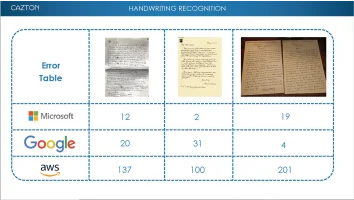Did you know that Artificial Intelligence (AI) can be utilized to convert handwritten documents into digital text? Furthermore, it can accurately preserve the location of the text as well. With the aid of Optical Character Recognition (OCR), handwritten letters, postcards, biographies, and various other documents can be transformed into text format. Simultaneously, it becomes possible to determine the precise location of each character on the image by obtaining the x and y coordinates. This information, in conjunction with the character's width and height, allows for the creation of a digitized version of the document while maintaining its original format.
Consider the implications of this technology in various domains: a hospital housing decades of handwritten patient records, businesses with extensive archives of handwritten invoices, or even the retrieval of ancient or medieval handwritten texts. The potential applications are limitless, and it primarily depends on employing the appropriate AI model in the preferred language.
Our data team comprises proficient software architects, data engineers, and data scientists who possess hands-on expertise in scaling applications and optimizing their performance. While we have developed on-premise models that effectively accomplish these tasks, we also sought to evaluate the existing cloud offerings. This PPT aims to provide a comparative analysis of Amazon Textract, Google Vision, and Microsoft Azure Vision API, specifically in their ability to recognize handwritten text samples.




